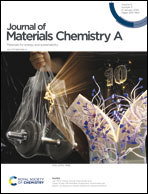Advances in bismuth-based anodes for potassium-ion batteries
Abstract
Potassium ion batteries (PIBs), characterized by the superiorities of low cost, moderate operating voltage and fast kinetics in electrolytes, are expected to narrow the gap between the energy storage systems based on abundant elements and lithium ion batteries (LIBs). However, the large size of K+ is not conducive to electrochemically reversible storage, limiting the practical application of PIBs. It is imperative to develop anode materials with salient performance for K+ storage. Bismuth-based materials stand out as promising candidate attributed to their low cost, high theoretical capacity, suitable reaction potential and large interlayer spacing. In this contribution, the recent research advances in Bi-based anode materials for PIBs, including metallic Bi-based materials and Bi-based compounds, are overviewed, focusing mainly on the K+ storage mechanisms and the relationship between the structure and performance of electrode materials. Particularly, the critical role of electrolyte optimization for Bi-based anode materials is emphasized. Finally, the prevailing challenges and prospects for the further development of Bi-based anodes are outlined. This review sets out to present a comprehensive knowledge of Bi-based anode materials for PIBs and stimulates further research towards practical applications.

- This article is part of the themed collection: Journal of Materials Chemistry A Recent Review Articles


 Please wait while we load your content...
Please wait while we load your content...